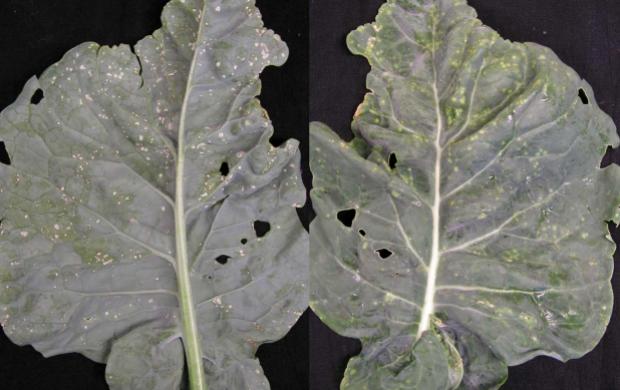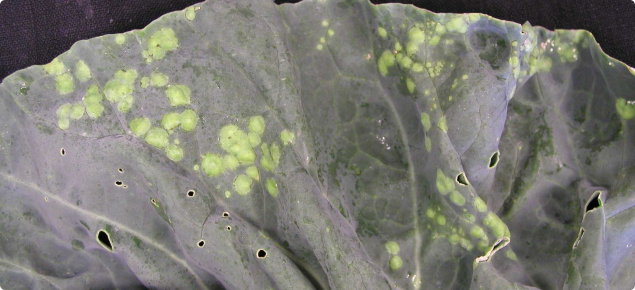Infection and symptoms
White blister can infect a plant both locally and/or systemically. Symptoms vary depending on infection type. The disease mainly infects plant parts that contain chlorophyll, that is the green parts, however systemic infections can affect any part.
Symptoms of localised infections are white ‘blisters’, which in the early stages are seen on the underside of leaves. As symptoms progress, circular areas of light green to yellow discolouration appear on the upper leaf surface, corresponding to white blisters on the underside of the leaves. The blisters contain white powdery spores which are spread by wind when released. Spores can be released at any time of day.
With systemic infections, the disease grows throughout the plant’s tissue, which is more difficult to control. Abnormal growth, distortion of affected plants or the formation of galls indicate systemic infection.
The galls and distorted plant parts contain another type of spore which can be spread in crop debris and on seed. In seedlings, affected plants may look ‘leggy’ and taller than non-affected seedlings due to the abnormal growth.
Currently 17 different races of white blister have been identified throughout the world. In Western Australia, race 9 causes symptoms on cauliflower and broccoli.

Conditions for infection and development
Conditions required for white blister infection are:
- temperature range of 13 to 25°C
- leaf wetness for a minimum of two to three hours (from dew, fog, rain or irrigation).
Symptoms will develop six to 21 days after infection. The disease is more common in autumn and spring but can occur at any time.
Means of spread
White blister can be spread by many different methods including:
- infected produce and leaves
- infected crop debris
- rain or irrigation splash
- wind and soil
- infected seedlings
- contaminated seed.
Volunteer brassica crops, brassica species used for biofumigation such as mustard, and brassica weeds such as wild radish and wild turnip, may also be hosts for various races of the disease.


